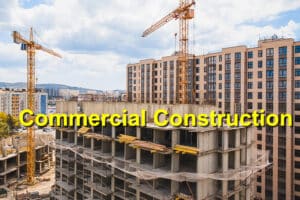As 2025 unfolds, residential construction is evolving rapidly, driven by technological innovation, sustainability demands, and shifting homeowner preferences. With the U.S. housing market facing a shortage of 4 million homes and construction spending at $2.139 trillion annually, new trends are addressing affordability, efficiency, and environmental concerns. From AI-driven automation to modular builds, here are the key trends shaping the future of residential construction.
AI and Automation for Efficiency
Artificial intelligence (AI) and robotics are revolutionizing construction processes. AI-powered tools like PlanGrid optimize project schedules, predict delays, and reduce costs by 15–20%. Autonomous equipment, such as Hadrian X robotic bricklayers, completes repetitive tasks faster, addressing labor shortages projected at 195,000 workers in 2025. Drones, now a $10 billion industry, conduct site surveys and monitor progress with real-time data, improving safety and accuracy. These technologies enable smaller crews to deliver projects faster, critical in a market where only 8.5% of projects finish on time.
Modular and Prefabricated Construction
Modular construction is booming, with the global market expected to grow from $138 billion in 2023 to $523 billion by 2030. Homes built off-site in controlled environments reduce waste by 15% and cut timelines by up to 50%. Companies like Boxabl deliver fully furnished modular units, appealing to first-time buyers seeking affordability. This trend supports urban infill projects and addresses housing shortages, with 40% of new builds in 2025 using prefabricated components for speed and cost savings.
Sustainable Materials and Green Building
Sustainability is non-negotiable, with 90% of homebuyers prioritizing energy efficiency. Innovations like low-carbon concrete, recycled steel, and biodegradable insulation reduce environmental impact. Thermally modified wood, resistant to moisture, gains traction for durability. Solar panels and cool roofs are standard, with 60% of new homes incorporating renewable energy. LEED-certified homes, using low-VOC paints and water-efficient systems, cut operational costs by 20%, aligning with stricter 2025 building codes pushing net-zero goals.
Smart Homes and IoT Integration
Smart home technology is a top trend, with 70% of buyers seeking connected features. IoT systems control lighting, HVAC, and security, optimizing energy use and enhancing convenience. In 2025, homes integrate 5G-compatible wiring and voice-activated assistants like Alexa, with smart thermostats saving 10–15% on energy bills. Builders are embedding sensors for predictive maintenance, such as leak detection, reducing repair costs. These features increase home value by 5%, per 2024 market data.
Compact and Flexible Designs
With urban land prices rising, compact designs like micro-homes and accessory dwelling units (ADUs) are surging, especially in cities facing housing crunches. Flexible layouts, such as movable walls or multi-purpose rooms, cater to remote work and multigenerational living, with 30% of new homes designed for adaptability. Biophilic elements—natural light, indoor plants, and green walls—improve wellness, appealing to 65% of buyers prioritizing health-focused spaces.
Resilient Construction for Climate Challenges
Climate-driven events, like floods and wildfires, are shaping designs. In 2025, 50% of new homes incorporate resilient features like elevated foundations, fire-resistant siding, and storm-rated windows. Builders use AI-driven climate modeling to select materials suited for local conditions, reducing damage risks by 25%. These designs align with updated codes in high-risk areas, ensuring long-term durability.
Workforce and Supply Chain Strategies
Labor and material challenges persist, with costs stabilizing but still 10% above pre-2020 levels. Builders are adopting cross-training and hiring incentives to combat shortages. Supply chain resilience is improved through local sourcing and inventory buffers, minimizing delays from global disruptions like potential tariffs.
By embracing AI, modular construction, sustainable materials, smart technology, compact designs, and resilient building, the residential construction industry in 2025 is poised to deliver innovative, eco-friendly, and affordable homes that meet modern demands and future-proof communities.
References: AltaVision, Joist




